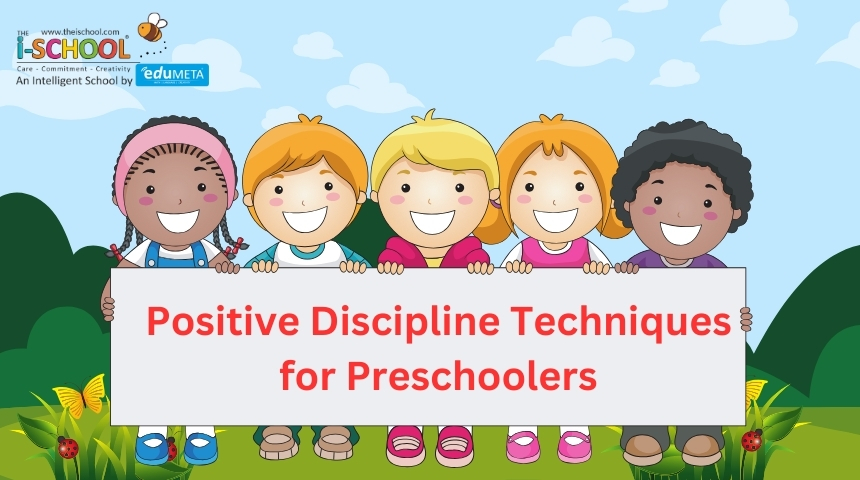Positive Discipline Techniques for Preschoolers

Positive discipline is an effective and compassionate approach to guiding young children. Unlike punitive methods, positive discipline focuses on teaching, guiding, and reinforcing good behavior. Here are some positive discipline techniques for preschoolers that can help create a nurturing and respectful environment:
1. Set Clear Expectations
Consistency is Key: Children need to know what is expected of them. Clearly define rules and routines so they understand the boundaries. Simple and Understandable: Use age-appropriate language to explain rules. Ensure your child knows the reason behind each rule.
2. Use Positive Reinforcement
Praise and Rewards: Acknowledge and reward good behavior. This can be through verbal praise, stickers, or small treats. Immediate Feedback: Give positive feedback immediately after the desired behavior occurs to reinforce it effectively.
3. Model Appropriate Behavior
Lead by Example: Children imitate adults. Show the behavior you expect from your child through your actions. Demonstrate Respect: Use polite language and show respect towards others to encourage your child to do the same.
4. Redirect Attention
Distract and Redirect: When a child is about to engage in undesirable behavior, distract them with another activity or toy. Offer Choices: Give your child options to choose from, which can help them feel more in control and less likely to misbehave.
5. Establish Consistent Consequences
Natural Consequences: Allow children to experience the natural consequences of their actions, within safe limits. Logical Consequences: Ensure consequences are related to the misbehavior and help children understand the connection between their actions and the outcomes.
6. Teach Problem-Solving Skills
Encourage Thinking: Help your child think through solutions to problems. Ask guiding questions to lead them to the answer. Role-Playing: Use role-playing to practice problem-solving and appropriate responses to various situations.
7. Use Time-In, Not Time-Out
Calm Down Corner: Create a safe and calming space for your child to go when they need to calm down and reflect on their behavior. Stay With Them: Spend time with your child in the calm-down area to help them process their emotions and understand what went wrong.
8. Foster Emotional Intelligence
Label Emotions: Teach your child to identify and label their emotions. This helps them understand and express their feelings appropriately. Empathy and Understanding: Show empathy towards your child’s feelings and help them understand the feelings of others.
9. Consistent Routines
Predictable Schedule: Maintain a consistent daily routine. This helps children feel secure and know what to expect. Routine Charts: Use visual charts to outline daily routines, making it easier for preschoolers to follow.
10. Encourage Independence
Age-Appropriate Tasks: Allow your child to perform tasks suitable for their age. This builds confidence and a sense of responsibility. Support and Guide: Offer help and guidance when needed, but encourage your child to try things on their own first.
11. Stay Calm and Patient
Manage Your Emotions: Children learn how to handle emotions by watching adults. Stay calm and patient, even during challenging moments. Take Breaks: If you feel overwhelmed, take a short break to collect yourself before addressing your child’s behavior.
Conclusion
Positive discipline is about guiding children with love, respect, and consistency. By using these techniques, you can help your preschooler develop good behavior, emotional intelligence, and problem-solving skills, all of which are crucial for their growth and development. Remember, the goal is to teach and guide, not to punish. With patience and consistency, positive discipline can create a harmonious and nurturing environment for your child to thrive.
